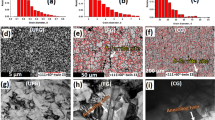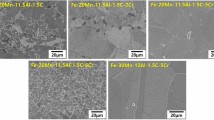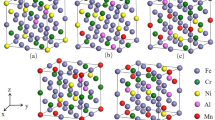Abstract
Austenitic stainless steels have become important high-temperature structural and containment alloys in applications ranging from industrial processes to energy generation and conversion. The AISI Type-300 series of iron–base austenitic stainless steels, in particular, is widely used as a barrier or primary containment material for both nuclear and fossil fuels operation at temperatures as high as 700 and 1,000 °C, respectively. Thus any observed deleterious effect of chemical environment on the alloy mechanical properties such as the ‘hot’ embrittlement of austenitic stainless steel by liquid zinc1,2 is very important and, indeed, Old3 has mentioned that fission products such as caesium, cadmium and tellurium might embrittle the austenitic stainless steel cladding of fast reactor fuel pins in certain conditions. The few investigations of the high temperature mechanical behaviour of iron–base austenitic stainless steels in chemical environments intended to simulate in-reactor conditions have not positively identified any particularly severe chemomechanical degradation, such as that accompanying stress corrosion cracking or liquid metal embrittlement. We now report the observation of rapid, severe embrittlement of AISI 316 stainless steel by liquid tellurium–caesium mixtures in the temperature region 500–700°C. Our results were obtained using a test technique that involves radially deforming small ring specimens contained inside an environmental chamber by compressive loading at a uniform displacement rate. This ring compression test technique has the advantages of facile control of the chemical environment and ease of adaptation for work with irradiated materials.
This is a preview of subscription content, access via your institution
Access options
Subscribe to this journal
Receive 51 print issues and online access
$199.00 per year
only $3.90 per issue
Buy this article
- Purchase on Springer Link
- Instant access to full article PDF
Prices may be subject to local taxes which are calculated during checkout
Similar content being viewed by others
References
Elliot, D. Process Engng 67–71 (July 1976).
Cahn, R. W. Nature 265, 11–12 (1977).
Old, C. F. J. nucl. Mater. 92, 2–25 (1980).
Adamson, M. G. IAEA Rep. IWGFR/16, 108–136, 170–189 (1979).
Author information
Authors and Affiliations
Rights and permissions
About this article
Cite this article
Adamson, M., Aitken, E. & Vaidyanathan, S. Synergistic tellurium–caesium embrittlement of Type 316 stainless steel. Nature 295, 49–51 (1982). https://doi.org/10.1038/295049a0
Received:
Accepted:
Issue Date:
DOI: https://doi.org/10.1038/295049a0
This article is cited by
-
Tellurium embrittlement of Type 316 steel
Journal of Materials Science (1990)
-
Liquid Cs, Te-lnduced fatigue embrittlement of cold-worked 316 stainless steel
Metallurgical Transactions A (1986)
Comments
By submitting a comment you agree to abide by our Terms and Community Guidelines. If you find something abusive or that does not comply with our terms or guidelines please flag it as inappropriate.



